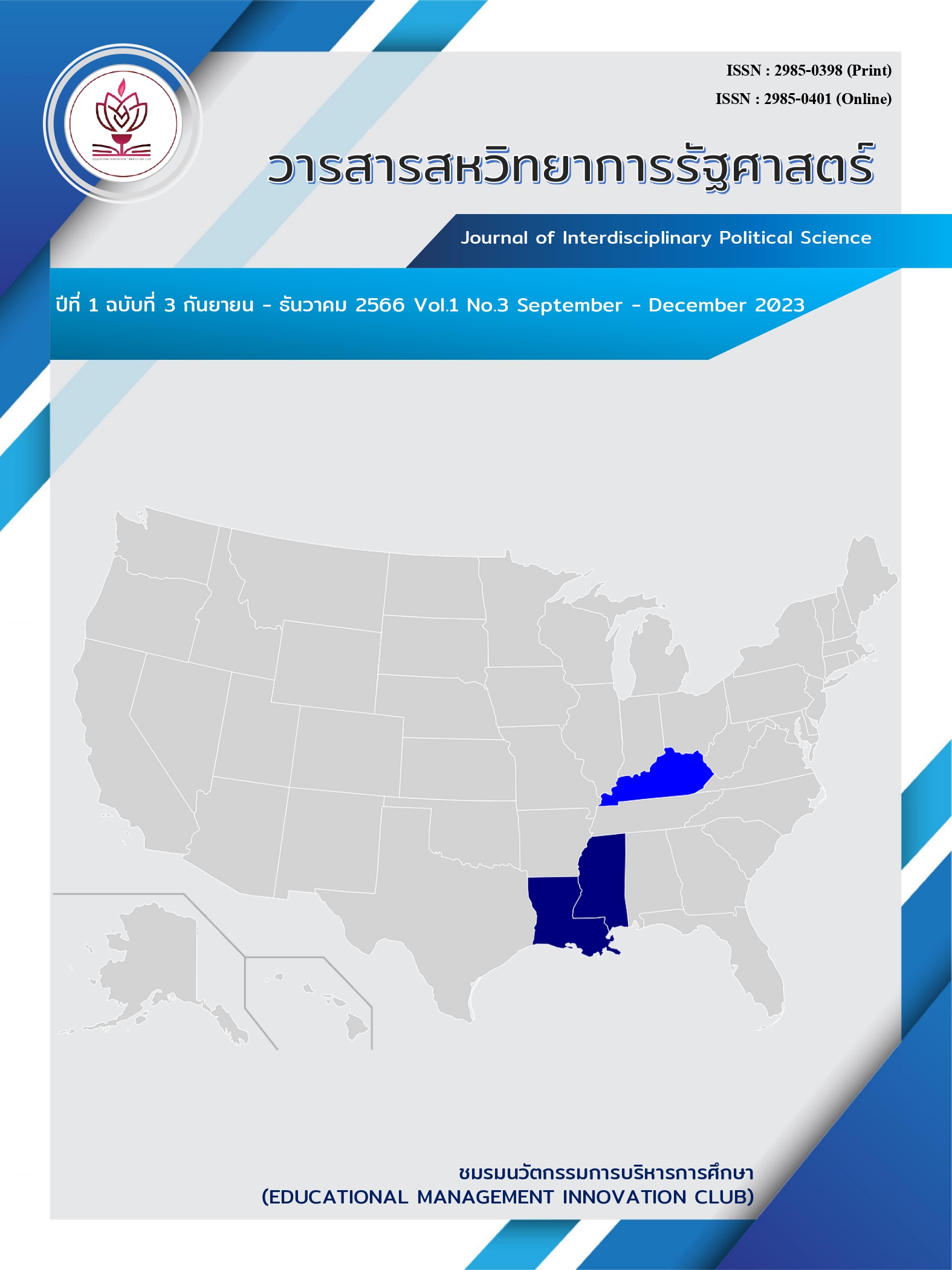The Process of Developing the Potential of Homeless People to Return to the Family and Communities in the Krasiao Self-Establishing Estates Suphanburi Province
Main Article Content
Abstract
This research has three objectives (1) to analyze the process of developing the potential of homeless people. to return to the family and community in the Krasiao self-establishing estate Suphan Buri Province at present (2) to analyze the problem of the development of homelessness potential to return to the family and community in the Krasiao self-establishing estate Suphan Buri Province at present and (3) to propose guidelines for developing the potential of homeless people to return to the family and community in the Krasiao self-establishing estate Suphanburi Province. At present, this research is a quality research. by collecting information and analyze the content the research results according to the stated objectives (1) found that the development of potential through four development methods is an extension and development of the process in actual practice. There is a development plan that covers all dimensions. Emphasis on integrated work There is a local capital to provide services according to the principles of natural therapy (2) It was found that most of the homeless people had psychiatric problems. There are limitations to the development of homelessness, the need for continued care, and (3) it was found that the program was implemented and opened up opportunities for homeless people to participate in defining activities in accordance with the capacity development framework. in all 4 areas and is motivating to return to life with family and community with the participation of the public, private and public sectors to integrate assistance by monitoring and evaluating living with family and community through local networks periodically as appropriate to prevent recurrence of homelessness.
Article Details

This work is licensed under a Creative Commons Attribution-NonCommercial-NoDerivatives 4.0 International License.
References
กัลยาณี ศรีสันต์. (2541). “ประสิทธิผลของมาตรการการฟื้นฟูสมรรถภาพคนเร่ร่อนจากชนบท: ศึกษากรณีกลุ่มคนเร่ร่อนจากชนบทที่ผ่านมาตรการการฟื้นฟูสมรรถภาพคนเร่ร่อนทั้งในและนอกสถานสงเคราะห์”. (วิทยานิพนธ์มหาบัณฑิต). คณะศิลปศาสตร์ มหาวิทยาลัยเกริก.
กิตติยา รัตนากร. (2531). คนพิการ: สงเคราะห์และการฟื้นฟูสมรรถภาพ. กรุงเทพมหานคร: คณะสังคมสงเคราะห์ศาสตร์.
กองคุ้มครองสวัสดิภาพและเสริมสร้างคุณภาพชีวิต กรมพัฒนาสังคมและสวัสดิการ. (2563). รายงานจำนวนผู้ใช้บริการในสถานคุ้มครองคนไร้ที่พึ่ง 2563. กรุงเทพฯ: กรมพัฒนาสังคมและสวัสดิการ.
ประภัสสร วัฒนา. (2560). แนวความคิดมนุษยนิยมของ มาสโลว์ (Maslow) และแนวความคิดอัตถิภาวนิยมของฌอง ปอล ซาร์ตร์ (Jean Paul Sartre) ที่ปรากฎผ่านนวนิยายเรื่อง “วันหนึ่งในชีวิตของอีวาน เดนิโซวิช”. (วิทยานิพนธ์มหาบัณฑิต). คณะศิลปศาสตร์ มหาวิทยาลัยธรรมศาสตร์.
พรพิมล พลเวียง. (2545). สวัสดิการครอบครัวและสังคม. นนทบุรี: สำนักพิมพ์มหาวิทยาลัยสุโขทัยธรรมาธิราช.
วสันต์ ณ ถลาง. (2549). สาเหตุของการกลับมาเป็นคนเร่ร่อน ขอทานในสถานแรกรับคนไร้ที่พึ่งสันมหาพน อำเภอแม่แตง จังหวัดเชียงใหม่. (วิทยานิพนธ์ปริญญาโท). มหาวิทยาลัยแม่โจ้, เชียงใหม่.
สาลินี วงศ์ทอง. (2543). “แนวทางการใช้อาชีวบำบัด (กิจกรรมบำบัด) ในกระบวนการพัฒนาศักยภาพบุคคลไร้ที่พึ่งในหน่วยงานด้านการสงเคราะห์คนไร้ที่พึ่งกรมประชาสงเคราะห์”. (วิทยานิพนธ์มหาบัณฑิต). คณะสังคมสงเคราะห์ศาสตร์ มหาวิทยาลัยธรรมศาสตร์.
สุชาดา สาครเสถียร. (2530). การฟื้นฟูสมรรถภาพทางจิตสังคม. นนทบุรี: กรมสุขภาพจิต.
สำนักงานส่งเสริมและสนับสนุนวิชาการ 5. (2560). การถอดบทเรียนการปฏิบัติงานกลุ่มเป้าหมายคน ไร้ที่พึ่ง และขอทาน (โครงการบ้านน้อยในนิคมฯ). สำนักงานปลัดกระทรวงการพัฒนาสังคมและความมั่นคง ของมนุษย์.
สำนักงานส่งเสริมและสนับสนุนวิชาการ 10 จังหวัดเชียงใหม่. (2560). แนวทางการเตรียมความพร้อม ของครอบครัวและชุมชนในการรับคนไร้ที่พึ่งกลับสู่ชุมชน. สำนักงานปลัดกระทรวงการพัฒนาสังคม และความมั่นคงของมนุษย์.
UNHCR ประเทศไทย. (2563). ข้อมูลประชากรพลัดถิ่น. สืบค้นจาก https://www.unhcr.org/th/unhcr-in-Thailand.


